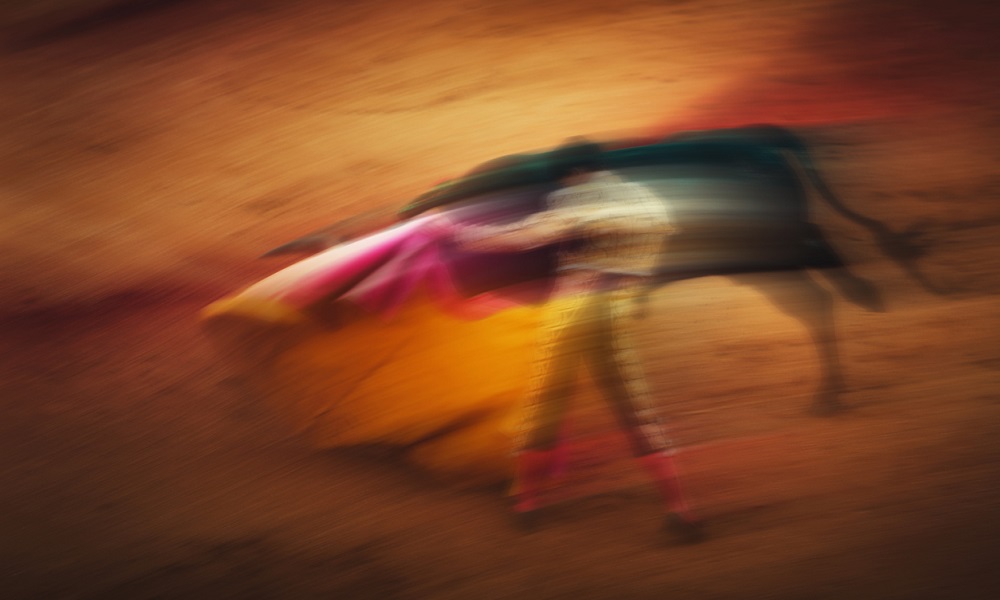For many, bullfighting is an art, but this does not necessarily mean that a bullfight is a work in which the bullfighter holds a copyright: the Supreme Court is to decide whether a bullfight can be an original work and is therefore protectable by copyright.
The Supreme Court has ruled on the copyright protection of the most bizarre expressions, including a DIY catalogue or the instructions for a shower screen. However, against all odds, it has never had the chance to decide on whether a bullfight can be protected by copyright. The ruling of November 18, 2020 reveals that this is about to change.
Act one: registration of the bullfight
Throughout history, bullfighting has been an endless source of inspiration for many of our artists. In principle, it would seem that nobody can feasibly doubt the originality of the paintings by Goya or Zuloaga, nor Act IV of Bizet’s Carmen. But if we focus on what is being represented in these works – bullfighting – doubts about their originality, within the meaning of the Intellectual Property Law (IPL), start to arise.
These are precisely the doubts that led the Intellectual Property Registry of Extremadura to refuse to register a bullfight by a bullfighter from Extremadura, a decision that was confirmed by Badajoz Commercial Court no. 1. The bullfight in question, was the following:
“Faena de dos orejas con petición de rabo de toro “Curioso” nº 94, de peso 539 kg, nacido en febrero de 2010 ganadería de Garcigrande feria de San Juan de Badajoz, día 22 de junio de 2014: “mano izquierda al natural cambiándose de mano por la espalda sin moverse. Luego liga pase cambiado por la espalda y da pase por la derecha. El toro sale suelto y el torero va hacia él dando pase por alto con la derecha”.”
Why did the court also refuse the registration? In principle, the court found that a bullfight was not a strictly human creation, because it depends on the bull’s behavior. Neither is it an intellectual creation, because the outcome rides on physical ability rather than on ingenuity. The court also held that a bullfight is not a creation, but a series of predetermined “passes”, many of them regulated; neither is it an original creation, because a bullfighter’s movements are determined by the Bullfighting Performances Regulations, and he therefore has no creative freedom. Finally, the court noted that bullfighting forms part of Spain’s cultural heritage, which prevents a single individual from monopolizing particular bullfights, precluding other people from doing so too and also from holding moral rights in such spectacles.
Act two: failed attempt
Following the appeal filed against the above decision, the Badajoz Appeal Court in turn handed down its opinion on January 22, 2018 (here). The Appellate Court does not appear to pass judgment on whether a bullfight can, or cannot ideally be covered by copyright. However, it held, in line with the appealed decision, that the registration of these types of works could curb bullfighters’ performances in the future, in the fear that they might be breaching someone else’s copyright. As a result, the court found that the registration requested could not be granted.
Final act: first trumpet call
The Supreme Court ruling (see here) accepted two of the grounds for the cassation appeal filed against the judgment, thereby agreeing to interpret article 10 of the IPL – presumably to verify whether bullfight is a work that can be protected under that provision.
The interpretation that will be offered does not end there. The Supreme Court appears to anticipate that it will be unifying legal opinion as regards the originality that may be demanded of an intellectual property work to verify whether it is “protectable”, as case law is divided on the subject. Indeed case law which follows criteria, such as objective originality – the strict novelty requirement with respect to what already exists –; subjective originality – the expression of the author’s personality –; or the level of creativity – certain minor works cannot gain the degree of protection afforded by copyright – varies considerably on the issue.
The Supreme Court’s decision on the appeal will in all probability be guided by the consistent view held by the CJEU when interpreting the degree of originality required (independent concept of European law), set forth, for example, in its Levola, Cofemel or Brompton judgments, which leans decidedly towards subjective originality.
Will the bullfight reveal enough ‘courage’ to be classified as a work?
Cultural heritage (Law 18/2013), art, hallowed tradition or animal torture; no one is indifferent to bullfighting, which has both the most ardent supporters and the fiercest critics. This divisive subject is soon to enter a new arena because the question that follows the admission of the cassation appeal is the following: does bullfighting deserve to be classified as a work?
In this case it is up to the Supreme Court to wave the relevant handkerchief, not in view of the public’s opinion, but following a strict interpretation of the Intellectual Property Law and European guidelines on the subject, based on which the CJEU has refused to grant protection to items as offbeat as the taste of cheese or a football match (FAPL). In the absence of precedents, the Spanish courts have differing views on the subject. Whereas Hugo de Patrocinio Polo, in his work Tauromaquia y Propiedad Intelectual, (Bullfighting and Copyright) defends the view that bullfighting can be copyrighted, other authors such as Bercovitz Rodríguez-Cano (Comentarios a la Ley de Propiedad Intelectual) (Comments on the Intellectual Property Law) hold that since “strength, ability [and] courage prevail over creation”, this implies the primacy of physical ability, which prevents a bullfight constituting a work.
To draw an analogy with sport such as football, this last opinion would be much more likely to succeed based on the CJEU judgment in the FAPL case, in which the court ruled, based on similar arguments, that a football match could not be protected by copyright.
Ricardo López Alzaga
Intellectual Property Department






